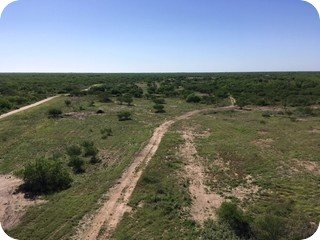Environmental Compliance Milestones
Environmental Compliance Milestones
By Peter Luthiger,
TMRA Secretary
Restoration and closure of wellfields are some of the most important environmental compliance milestones that every U.S. uranium in situ recovery ("ISR") facility must complete following uranium production from an orebody. As with all mining, comprehensive regulatory oversight of uranium recovery operations is in place well in advance of any actual mining occurring. An integral step in the permitting process is the establishment of baseline water quality which is incorporated into each individual production permit and become the restoration goals that mining companies must achieve following mining.
During the mining phase, comprehensive groundwater monitoring occurs with the goal of ensuring drinking water supplies are not impacted. Upon completion of mining, groundwater restoration efforts are initiated and typically use a combination of methods including groundwater sweep, reverse osmosis, and groundwater recirculation. These techniques have been demonstrated to be effective in achieving the restoration goals established in the permit. During the restoration phase, mining companies provide to the regulatory agencies not only the restoration progress reports but groundwater monitoring reports are also provided to demonstrate drinking water supplies continue to be protected.
With completion of the active restoration phase, mining companies must then demonstrate to the regulatory agency over a 9 month period that not only has the groundwater within the production zone stabilized; but companies must also demonstrate that the water quality conforms to the standards specified within the permit. Upon demonstration of stability, the mining company can finally request approval for completion of restoration.
Whoa there!! We are not done yet; but we are getting close though… Once mining companies receive approval from the agency that restoration is completed, final closure can be initiated with plugging and abandoning the wells that were used for production and environmental monitoring of the restored mine. There are numerous examples of mining companies in Texas that have achieved these import milestones. Case in point – EFR Alta Mesa LLC.
EFR Alta Mesa LLC (EFR) has achieved these two major environmental milestones at its Alta Mesa Uranium Project ("Alta Mesa") in Texas. On March 16, 2018, the Company received notice from the Texas Commission on Environmental Quality ("TCEQ") confirming that the Company accomplished final groundwater restoration at Production Area 1 ("PAA1").
Upon TCEQ confirmation that wellfield restoration was completed, EFR proceeded with well plugging and final closure of permit requirements under Underground Injection Control (“UIC”) permit PAA1. Well plugging commenced in June 2018 and was completed in February 2019 with the plugging of 627 wells. TCEQ approved EFRs well plugging activities in September 2019. As a result of successful completion of the above-mentioned activities, EFR is in the process of reducing the reclamation bonds currently held on the project.
Mark S. Chalmers, President and CEO of Energy Fuels stated: "We are extremely proud to receive government confirmation of final restoration of the wellfield at Alta Mesa. Energy Fuels and the rest of the U.S. uranium industry operate under the highest health, safety, and environmental standards in the world, including state-of-the-art protection of groundwater and drinking water. This is a major milestone for Energy Fuels and further proof of our commitment to environmental stewardship. I congratulate our team on the ground in Texas and the support staff here in Denver for their hard work and professionalism on this important achievement."
Alta Mesa is a fully-permitted and constructed ISR uranium project located in South Texas. The project (including PAA1) was in production from 2005 until 2012, during which time it produced approximately 4.6 million pounds of U3O8, or enough uranium to provide clean, carbon-free electricity from an average sized nuclear reactor for a little over eight years. At the current time, Alta Mesa is being maintained by the Company on standby status, ready to resume operations within approximately 12 months of a production decision. Alta Mesa has a total project area of approximately 200,000 acres, including a licensed and constructed ISR processing plant with a total annual production capacity of 1.5 million pounds of U3O8 per year.
Plugging and Abandonment Activities
Crew Plugging Cased Wells
Cement Specifications Must be Achieved
PAA-1 – Post Restoration and Well P&A
Production Area PAA-1 – Post Closure (View to West)
Production Area PAA-1 – Post Closure (View to East)